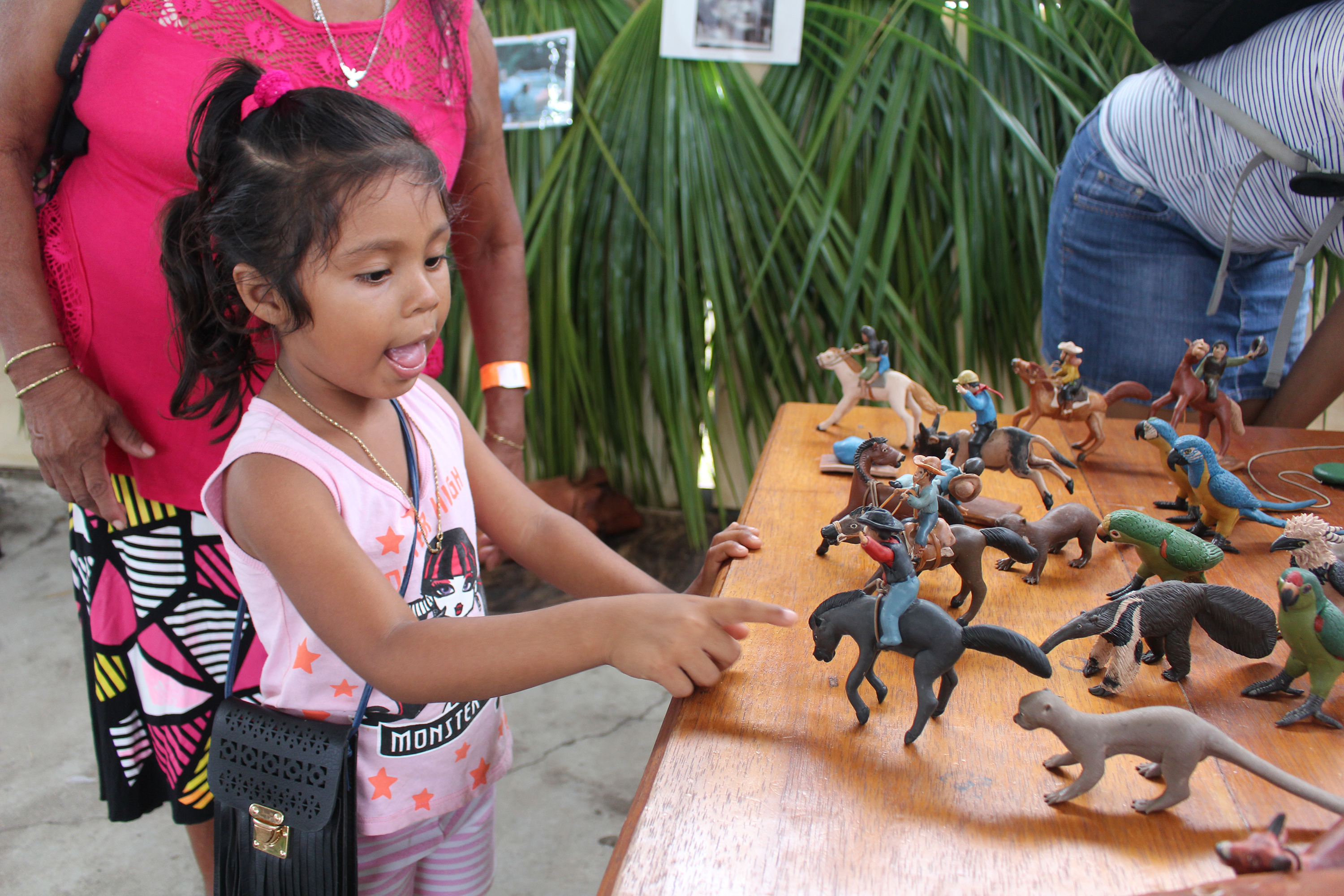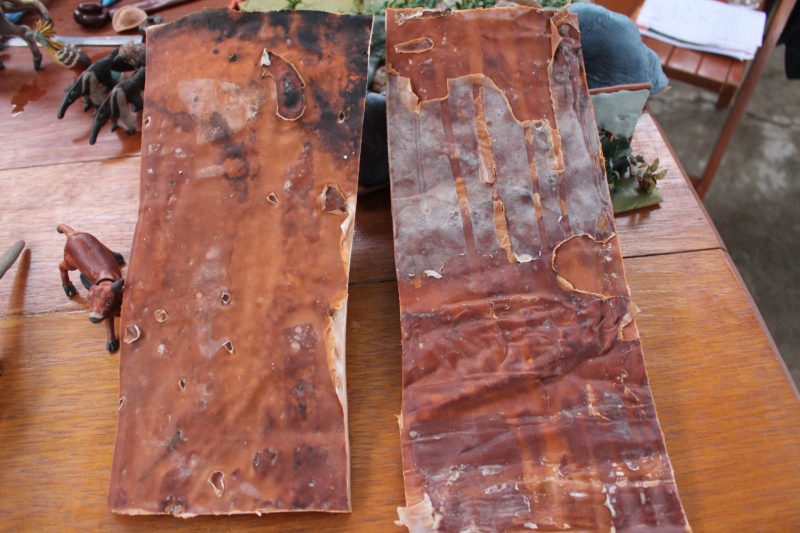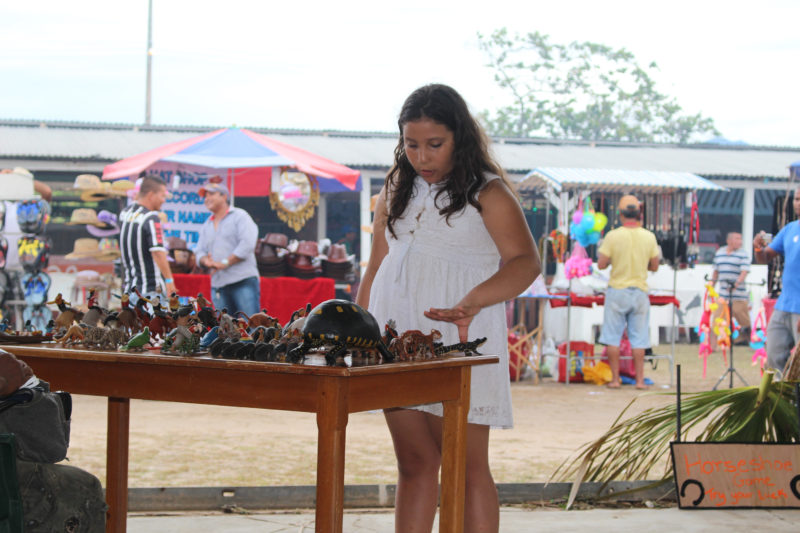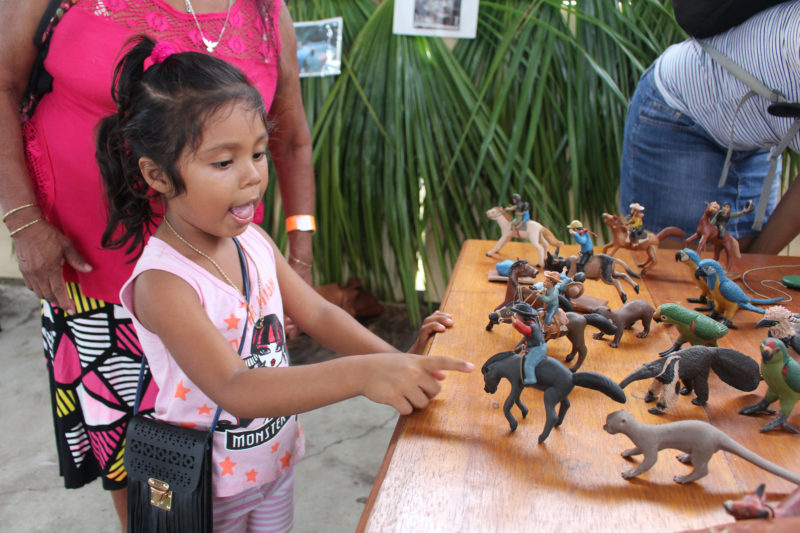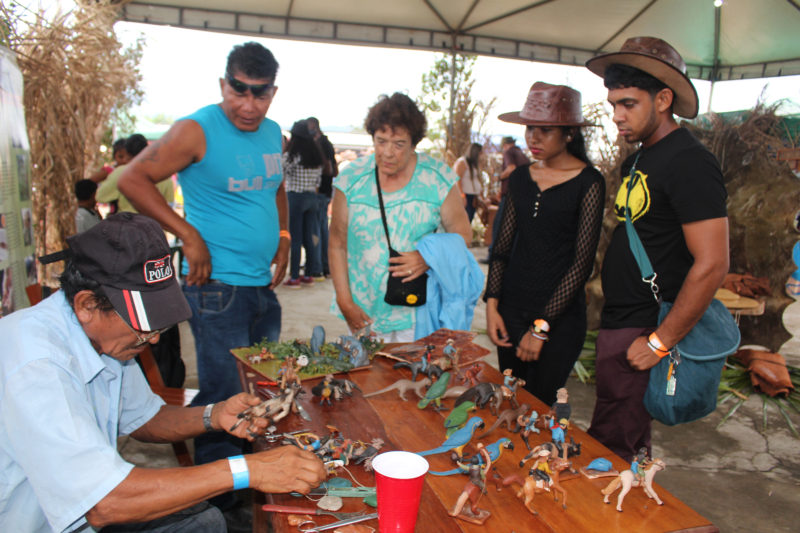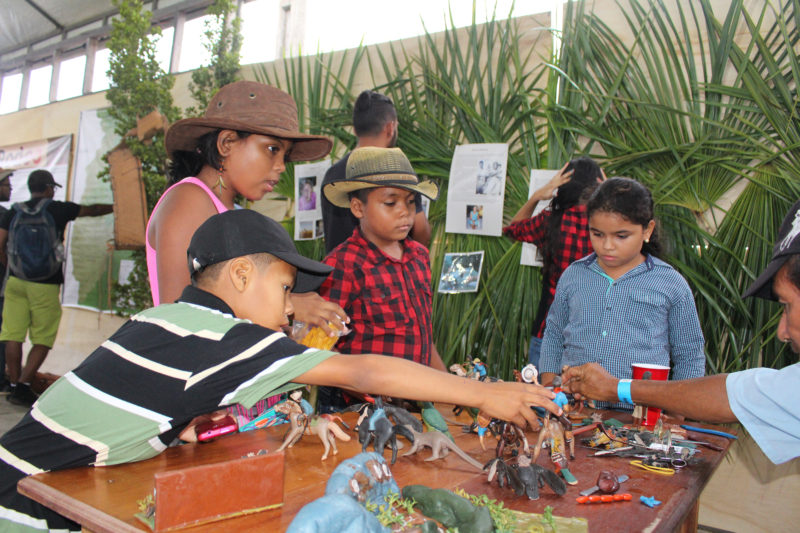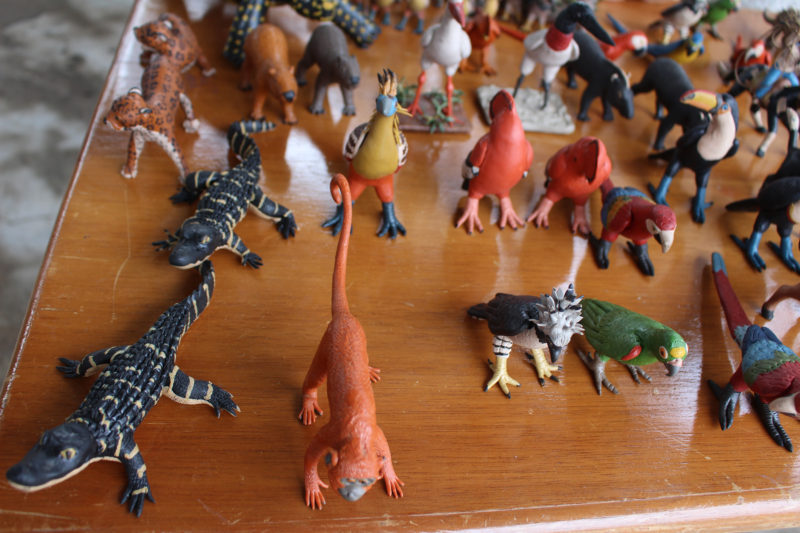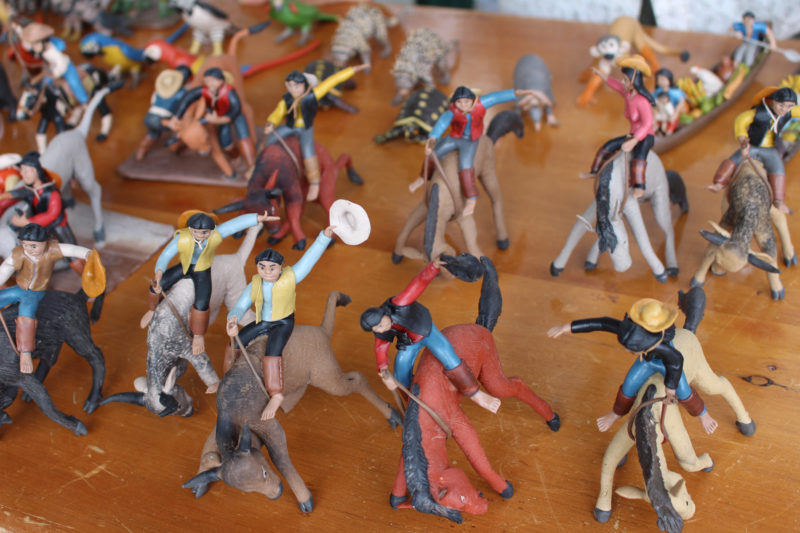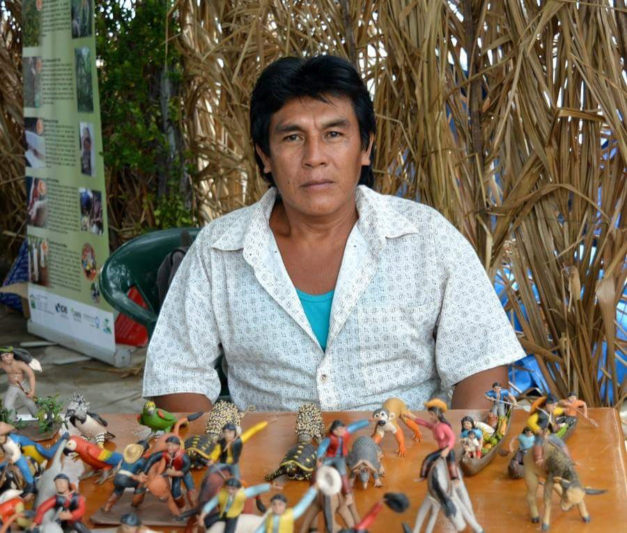Balata craftsmen Nicodemus Joseph and George Tancredo are known for stealing the spotlight at any given exhibition and this year’s Lethem rodeo was no exception when they displayed some of the most artistic animals and cowboys ever seen which captured the attention of many.
Amidst all the laughter of children enjoying the rides, the complaints of weary mothers and hungry babies, the bustling of people shoving to get through the crowd, the eager cries of chefs standing behind the grills of smoking kebabs and all the other noise, sat two men almost side by side in the quiet of it all attracting to their tables quite a handsome amount of awed people.
Their crowd included local people from Lethem, people from other parts of the Rupununi, the rest of Guyana, those visiting from the neighbouring Brazil, the US, the Caribbean including one BBC journalist from England and they all flocked around, squeezed themselves to the very front to get a glimpse of what the craftsmen had on display.
It was during one of these moments that The Scene passed by. Nicodemus sat behind a table teeming with tiny colourful rubber animals and cowboys made from the Balata latex as he responded to customers who enquired about the prices, which varied depending on their sizes.
Just nearby an even larger crowd gathered at another table with even more questions as persons were obviously impressed by what they saw. Put a piece of coloured balata into a boiling pot of water, take out once it has reached its required softness, then slowly form it into the required piece, then the process starts all over again with another piece before he acquired the animal he intended which he dropped in a container of cold water to allow it to cool for it to reach its required hardness before being displayed. This table belonged to George, the father-in-law of Nicodemus and that is how he told it.
Onlookers found themselves eagerly asking: what he made the animals from, what was balata, where did George get his balata, how he acquired the different colours, how long he’s been doing this; questions George quietly and patiently answered one after the other while he skillfully worked.
George, though in his seventies, worked with ease and quickness and as soon as we were able to steal him for a few of our own questions we did and he obliged.
According to George he enjoyed boyhood like any other boy growing up in Nappi Village, Central Rupununi and played all the games little boys played and it was while going to school then he was introduced to balata bleeding at age 14 and his life changed forever.
He recalled going into the woods at Apoteri, Rewa and journeying into the Nappi Mountain where he bled trees.
But it wasn’t until he was eighteen and started teaching at Nappi Primary that he was drawn to balata craft making. Although he doesn’t quite remember what it was that drew him into this, he noted that he first made craft from the rubber when he attended primary school and with his other classmates were given pieces of the balata latex to make whatever they wished but other than this he doesn’t recall having used it after until he was eighteen.
It was at that same age he made his first piece – a palm tree which won an exhibition at St Ignatius, Lethem.
His win led to him venturing into the balata art.
George was self-taught and started out making his pieces by doing a few hoofs at a time, then a few paws and other parts of the animals before he put it all together and then managed to form the entire animal with just one piece of balata latex without having to put pieces together to get his finish product. The making of animals started after seeing what is referred to as a gobi made from balata latex. Gobis are used to fetch water and like many of the gobis George had seen, this was no different except that it had a bird on top. This bird inspired George into making his own balata animals.
Practice eventually made him skilled enough to teach the other children of his school and from around his village and soon he began selling to persons in and outside of Nappi. Sometime after he was approached by a man he remembers as George Simon (Guyanese artist and archaeologist) who took him to Georgetown so he could better market his work and then through him George displayed his work in Trinidad, Jamaica and England.
Pointing to the balata in the pot of boiling water on a hot plate plugged into the wall, he explained that the balata because of its hard state needed to be put into boiling water to acquire its required softness. This allows him to form the animals into their respective shapes before he drops it into cold water for about half of an hour so it can return to its hard state.
However, at his age, he is not as agile as he used to be and though he is quite an expert at what he does he plans on retiring in three years’ time.
Fell in love
Nicodemus grew up in the same village but worked on ranches in his village and eventually left to work in Brazil. Upon his return to his village he met George’s daughter with whom he fell in love and soon settled down. George, he said, invited him to get into the making of the balata craft. Although Nicodemus saw numerous gobis around his village made from the balata, making animals from it was a relatively new idea to him and it took him a while to consider getting into it.
“The first time I made it, it wasn’t perfect but then he [George] tried and tried with me. I used to take two hours to make one animal and now I only take half an hour,” Nicodemus told The Scene
He soon developed a newfound passion he said, and added that he finds joy knowing that he can skillfully create his pieces. It has since been 16 years since he has been in the balata craft making art.
Nicodemus explained that to bleed the tree means extracting milk from the tree during the season, in July/August. To get sixty pounds of the latex, he needs to bleed seven trees, a two days’ job. The milk is put into a container then in the sun to dry for three or four days which allows it to harden. Once this is done it is kneaded just like dough and the desired colours added.
In 2000 and 2001, he and George displayed their pieces at GuyExpo which he recalled saw a tremendous crowd.
Sometime after they were supposed to travel to display their pieces at an exhibition in Ecuador but were unable to as they had not yet received their passports.
Challenged
The two artistes are challenged by transportation and finance. Nicodemus explained that to be able to market his pieces in Georgetown, he would have to take a bus from Nappi to Lethem, an hour’s drive before taking a bus from Lethem to Georgetown which takes 15 to 16 hours and costs $11,200 one way.
The two are connected to Conservation International which helps them and other balata craftsmen to market their pieces. They are looking forward to an upcoming Christmas fair later this year where they can again display their work and bring in sales. The venue and exact time are yet to be fixed. Nicodemus is hoping that more emphasis can be put on the making of balata craft.
For persons interested in getting their desired pieces of balata craft, Nicodemus and George can be reached at cell number 683-6014.
